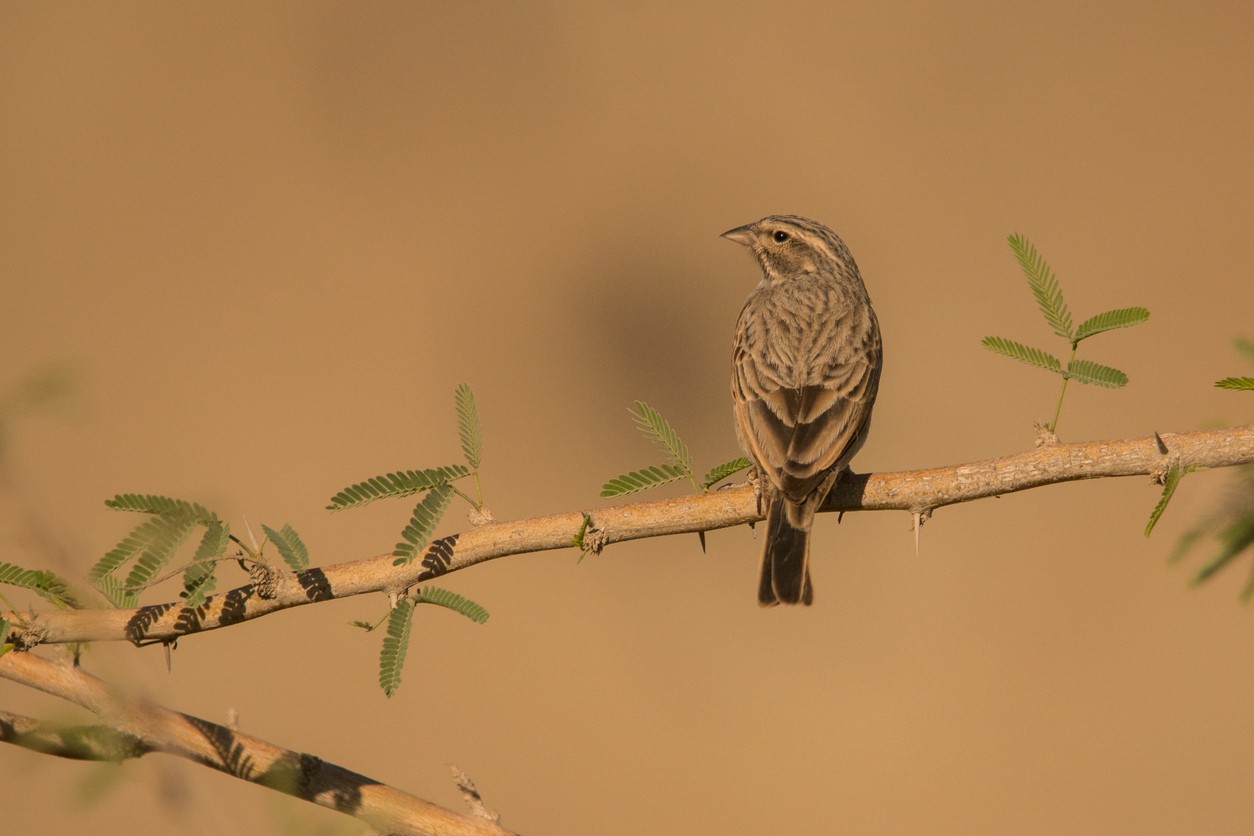Striolated Bunting
A species of Old World Buntings, Also known as Striated Bunting Scientific name : Emberiza striolata Genus : Old World Buntings
Striolated Bunting, A species of Old World Buntings
Also known as:
Striated Bunting
Botanical name: Emberiza striolata
Genus: Old World Buntings
Content
Description General Info

Description
It is 14 cm long, similar in size to the house bunting and smaller than the similarly plumaged rock bunting. The breeding male has a chestnut body, and grey head with darker streaking and a white supercilium and moustachial streak. The female's head has a brown tint to the grey, and more diffused streaking. The striolated bunting has stronger facial striping and a paler belly than the north African house bunting, which used to be considered conspecific as the subspecies E. striolata sahari. Birds in eastern Chad (E. striolata jebelmarrae) show some evidence of intergradation with the house bunting. The song, given from a perch, is similar to but weaker than that of the common chaffinch. 
Size
13 cm
Nest Placement
Ground
Feeding Habits
Striolated Bunting primarily consumes grass and herb seeds, such as Heliotropium, and occasionally flowers, Ziziphus berries, and insects. It forages on the ground and directly from plants, using a flutter-and-pull technique to eat seeds. Striolated Bunting drinks regularly, forms small flocks post-breeding, and winters with other buntings.
Habitat
Striolated Bunting typically resides in arid, rocky scrubland areas that are often situated in proximity to water. Though less commonly found in human-dominated environments compared to closely related species, striolated Bunting does inhabit towns and villages in certain regions. During winter, the species exhibits less habitat specificity and can be found around agricultural areas.
Dite type
Granivorous
General Info
Feeding Habits
Bird food type
Distribution Area
It is a resident breeder of dry country from the Canary Islands, east through south-west Asia to north-western India and in Africa. It breeds in remote wadis (not around human habitation like the related house bunting), usually close to streams, laying two to four eggs in a nest on the ground or in a hole in the ground. Its natural food consists of seeds, or when feeding young, insects. 


Scientific Classification
Phylum
Chordates Class
Birds Order
Perching birds Family
New world sparrows Genus
Old World Buntings Species
Striolated Bunting